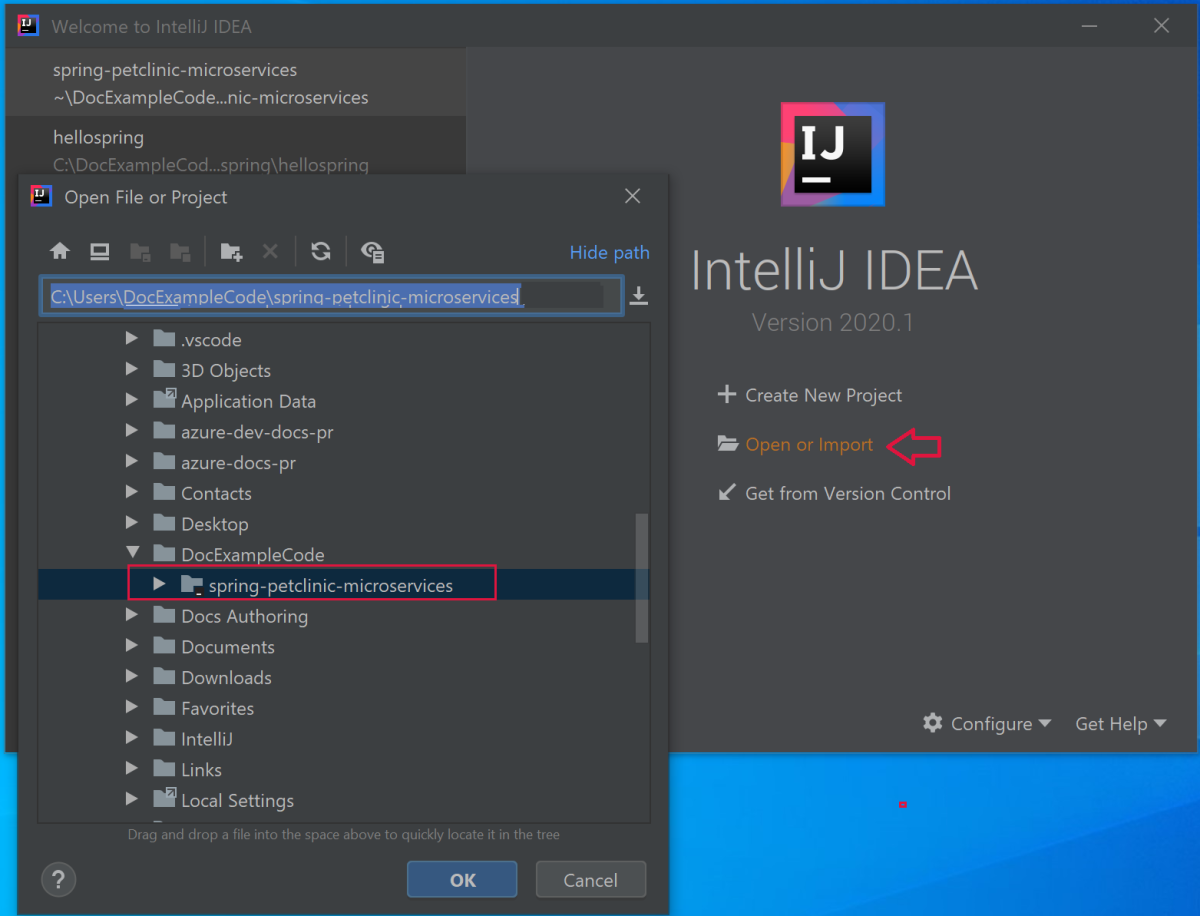快速入門:建置應用程式並將其部署至 Azure Spring Apps
注意
基本、標準和企業方案將從 2025 年 3 月中旬開始淘汰,並停用 3 年。 建議您轉換至 Azure Container Apps。 如需詳細資訊,請參閱 Azure Spring Apps 淘汰公告。
標準 耗用量和專用 方案將從 2024 年 9 月 30 日起淘汰,並在六個月後完成關閉。 建議您轉換至 Azure Container Apps。 如需詳細資訊,請參閱 將 Azure Spring Apps 標準取用和專用方案遷移至 Azure Container Apps。
本文適用於:✅ 基本/標準❎企業
本快速入門說明如何使用 Azure CLI 建置 Spring 應用程式並將其部署至 Azure Spring Apps。
必要條件
- 完成本系列中先前的快速入門:
下載範例應用程式
使用下列步驟來下載範例應用程式。 如果您已使用 Azure Cloud Shell,請切換至本機命令提示字元。
建立新的資料夾,並複製範例應用程式存放庫。
mkdir source-codecd source-codegit clone https://github.com/Azure-Samples/azure-spring-apps-samples流覽至存放庫目錄。
cd azure-spring-apps-samples
部署 PlanetWeatherProvider
使用下列步驟來部署 PlanetWeatherProvider 專案。
在 Azure Spring Apps 實例中為
PlanetWeatherProvider專案建立應用程式。az spring app create --name planet-weather-provider --runtime-version NetCore_31若要啟用自動服務註冊,您已將應用程式的名稱指定為專案appsettings.json檔案中的 值
spring.application.name:"spring": { "application": { "name": "planet-weather-provider" } }此命令可能需要幾分鐘才能完成執行。
將目錄變更為
PlanetWeatherProvider項目資料夾。cd steeltoe-sample/src/planet-weather-provider建立要部署的二進位檔和.zip檔案。
dotnet publish -c release -o ./publish提示
項目檔包含下列 XML,在將二進位檔寫入至 ./publish 資料夾之後,在.zip檔案中封裝二進位檔:
<Target Name="Publish-Zip" AfterTargets="Publish"> <ZipDirectory SourceDirectory="$(PublishDir)" DestinationFile="$(MSBuildProjectDirectory)/publish-deploy-planet.zip" Overwrite="true" /> </Target>將專案部署到 Azure。
在執行下列命令之前,請確定命令提示字元位於專案資料夾中。
az spring app deploy \ --name planet-weather-provider \ --runtime-version NetCore_31 \ --main-entry Microsoft.Azure.SpringCloud.Sample.PlanetWeatherProvider.dll \ --artifact-path ./publish-deploy-planet.zip選項
--main-entry會指定從 .zip 檔案根資料夾到 包含應用程式進入點之.dll 檔案的相對路徑。 服務上傳 .zip 檔案之後,它會擷取所有檔案和資料夾,然後嘗試在指定的 .dll 檔案中執行進入點。此命令可能需要幾分鐘才能完成執行。
部署 SolarSystemWeather
使用下列步驟來部署 SolarSystemWeather 專案。
在您的 Azure Spring Apps 實例中為專案建立另一個應用程式。
az spring app create --name solar-system-weather --runtime-version NetCore_31solar-system-weather是專案appsettings.json檔案中指定的SolarSystemWeather名稱。此命令可能需要幾分鐘才能完成執行。
將目錄變更為
SolarSystemWeather專案。cd ../solar-system-weather建立要部署的二進位檔和.zip檔案。
dotnet publish -c release -o ./publish將專案部署到 Azure。
az spring app deploy \ --name solar-system-weather \ --runtime-version NetCore_31 \ --main-entry Microsoft.Azure.SpringCloud.Sample.SolarSystemWeather.dll \ --artifact-path ./publish-deploy-solar.zip此命令可能需要幾分鐘才能完成執行。
指派公用端點
測試應用程式之前,請先取得對應用程式的 HTTP GET 要求 solar-system-weather 公用端點。
執行下列命令以指派端點。
az spring app update --name solar-system-weather --assign-endpoint true執行下列命令以取得端點的 URL。
Windows:
az spring app show --name solar-system-weather --output tableLinux:
az spring app show --name solar-system-weather | grep url
測試應用程式
若要測試應用程式,請將 GET 要求傳送至 solar-system-weather 應用程式。 在瀏覽器中,流覽至附加至公用URL /weatherforecast 。 例如:https://servicename-solar-system-weather.azuremicroservices.io/weatherforecast
輸出為 JSON:
[{"Key":"Mercury","Value":"very warm"},{"Key":"Venus","Value":"quite unpleasant"},{"Key":"Mars","Value":"very cool"},{"Key":"Saturn","Value":"a little bit sandy"}]
此回應顯示這兩個 Spring 應用程式都正常運作。 應用程式 SolarSystemWeather 會傳回從 PlanetWeatherProvider 應用程式擷取的數據。
本文說明如何將 Spring 應用程式建置和部署至 Azure Spring Apps。 您可以使用 Azure CLI、Maven 外掛程式或 Intellij。 本文說明每個替代方案。
必要條件
- 完成本系列中先前的快速入門:
- JDK 17
- Maven 3.0 或更新版本
- Azure 訂用帳戶。 如果您沒有訂用帳戶,請先建立免費帳戶,再開始操作。
- 或者, Azure CLI 2.45.0 版或更高版本。 使用下列命令安裝 Azure Spring Apps 擴充功能:
az extension add --name spring - 或者, 適用於 IntelliJ 的 Azure 工具組。
在本機建置 Spring 應用程式
使用下列命令複製範例存放庫、流覽至範例資料夾,然後建置專案。
git clone https://github.com/azure-samples/spring-petclinic-microservices
cd spring-petclinic-microservices
mvn clean package -DskipTests -Denv=cloud
編譯專案需要 5-10 分鐘。 編譯專案時,您應該在其各自的資料夾中,針對每個服務都有個別的 JAR 檔案。
在 Azure Spring Apps 上建立和部署應用程式
使用下列步驟,使用 CLI 在 Azure Spring Apps 上建立及部署應用程式。
如果您先前的快速入門中未執行下列命令,請立即執行它們以設定 CLI 預設值。
az configure --defaults group=<resource-group-name> spring=<service-name>建立 PetClinic 的兩個核心 Spring 應用程式:
api-gateway和customers-service。az spring app create \ --name api-gateway \ --runtime-version Java_17 \ --instance-count 1 \ --memory 2Gi \ --assign-endpoint az spring app create \ --name customers-service \ --runtime-version Java_17 \ --instance-count 1 \ --memory 2Gi部署在上一個步驟中建置的 JAR 檔案。
az spring app deploy \ --name api-gateway \ --artifact-path spring-petclinic-api-gateway/target/api-gateway-3.0.1.jar \ --jvm-options="-Xms2048m -Xmx2048m" az spring app deploy \ --name customers-service \ --artifact-path spring-petclinic-customers-service/target/customers-service-3.0.1.jar \ --jvm-options="-Xms2048m -Xmx2048m"使用下列命令在部署之後查詢應用程式狀態。
az spring app list --output table此命令所產生的輸出與下列範例類似:
Name Location ResourceGroup Production Deployment Public Url Provisioning Status CPU Memory Running Instance Registered Instance Persistent Storage ----------------- ---------- --------------- ----------------------- --------------------------------------------------- --------------------- ----- -------- ------------------ --------------------- -------------------- api-gateway eastus xxxxxx-sp default https://<service name>-api-gateway.azuremicroservices.io Succeeded 1 2 1/1 1/1 - customers-service eastus <service name> default Succeeded 1 2 1/1 1/1 -
確認服務
使用先前顯示的公用 URL 從瀏覽器存取 api-gateway 和 customers-service ,格式為 https://<service name>-api-gateway.azuremicroservices.io。
提示
若要疑難解答部署,您可以使用下列命令,在應用程式執行 az spring app logs --name <app name> --follow時即時取得記錄串流。
部署額外的應用程式
若要讓 PetClinic 應用程式使用管理員伺服器、造訪和獸醫等所有功能運作,請使用下列命令部署其他應用程式:
az spring app create \
--name admin-server \
--runtime-version Java_17 \
--instance-count 1 \
--memory 2Gi \
--assign-endpoint
az spring app create \
--name vets-service \
--runtime-version Java_17 \
--instance-count 1 \
--memory 2Gi
az spring app create \
--name visits-service \
--runtime-version Java_17 \
--instance-count 1 \
--memory 2Gi
az spring app deploy \
--name admin-server \
--runtime-version Java_17 \
--artifact-path spring-petclinic-admin-server/target/admin-server-3.0.1.jar \
--jvm-options="-Xms1536m -Xmx1536m"
az spring app deploy \
--name vets-service \
--runtime-version Java_17 \
--artifact-path spring-petclinic-vets-service/target/vets-service-3.0.1.jar \
--jvm-options="-Xms1536m -Xmx1536m"
az spring app deploy \
--name visits-service \
--runtime-version Java_17 \
--artifact-path spring-petclinic-visits-service/target/visits-service-3.0.1.jar \
--jvm-options="-Xms1536m -Xmx1536m"
清除資源
如果您打算繼續進行後續的快速入門和教學課程,您可以讓這些資源留在原處。 如果不再需要,請刪除資源群組,這會刪除資源群組中的資源。 若要使用 Azure CLI 刪除資源群組,請使用下列命令:
echo "Enter the Resource Group name:" &&
read resourceGroupName &&
az group delete --name $resourceGroupName &&
echo "Press [ENTER] to continue ..."
![顯示 [擁有者] 頁面的 PetClinic 範例應用程式的螢幕快照。](media/quickstart-deploy-apps/access-customers-service.png)

![IntelliJ 專案總管的螢幕快照,其中顯示 [部署至 Azure Spring Apps] 功能表選項。](media/quickstart-deploy-apps/deploy-to-azure-1-pet-clinic.png)
![[IntelliJ 建立 Azure Spring 應用程式] 對話框的螢幕快照,其中顯示 [記憶體] 和 [JVM 選項] 控件。](media/quickstart-deploy-apps/memory-jvm-options.png)
![[IntelliJ 部署至 Azure] 對話框的螢幕快照,其中已醒目提示 [選取 Maven 目標] 區段。](media/quickstart-deploy-apps/deploy-to-azure-spring-apps-2-pet-clinic.png)